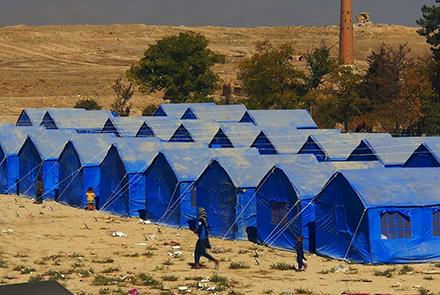The United Nations Office for the Coordination of Humanitarian Affairs in Afghanistan (UNOCHA) announced on Monday that the humanitarian community provided life-saving, emergency humanitarian assistance to more than 3.6 million Afghans in 2016.
In a statement issued by UNOCHA, the organization said: “Through the committed and collective efforts of Afghanistan’s humanitarian community, 3.6 million vulnerable, marginalized Afghans – around 11 percent of the population – received emergency humanitarian assistance last year.”
Dominic Parker, Head of Office for UNOCHA in Afghanistan said: “For too long, millions of Afghans continue to suffer the devastating impact of war and recurrent natural disasters. However, these results show that the humanitarian community remains a tireless partner that is delivering real, life-saving assistance, and we are ready to do more.”
UNOCHA Afghanistan has published the results in its 2016 Humanitarian Response Plan Year-End Report, which compiles the collective efforts of Afghanistan’s humanitarian community to reach the most vulnerable Afghans through the annual Afghanistan Humanitarian Response Plan (HRP), a strategy that aims to prevent loss of life, limit preventable morbidity and human suffering and enhance protection.
In 2016, donors were once again generous in their support, providing over $538 million USD towards humanitarian programming, including $356 million USD towards the HRP.
Last year, Afghanistan’s HRP was 73 percent funded – an outstanding result that placed Afghanistan in the top two best-funded appeals globally for a second year in a row.
The majority of humanitarian assistance was through the provision of life-saving medical care and emergency medical supplies, in addition to emergency supplies of food, water, and shelter.
Of note, humanitarian partners responded to one million conflict internally displaced persons (IDPs), including some displaced in 2015, and 600,000 returnees from Pakistan.
This year, UNOCHA estimates that 9.3 million Afghans will be in need of humanitarian assistance, of which 5.6 million of the most vulnerable are targeted for help under the 2017 Afghanistan HRP.
“2017 will be yet another challenging year for Afghanistan, and the humanitarian community will have to redouble our efforts,” said Parker.
“We expect high levels of conflict-induced displacement, further returns of vulnerable families from Pakistan, and more life-saving interventions needed to address acute health and nutrition emergencies. This year, we have appealed for $550 million USD, and look forward to the ongoing strong commitment from donors.”


